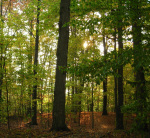In the beginning, God created the heavens and the earth. God revealed himself to the Hebrews, and their scriptures speak of creation revealing God’s glory, his ordering of times and seasons, and his lavish provision.
As the Christian era dawned, the apostle Paul wrote in the New Testament that creation wordlessly communicates something of God to everyone. Ancient Greek philosophers agreed: there is evidence for God in nature. The early Christian theologian Augustine gave a name to this revelation of God through creation: natural theology. In the Middle Ages Thomas Aquinas laid out his now famous ‘five ways’ argument for God from observations of nature. Different expressions of natural theology were studied and taught throughout the Christian church.
The scientific era dawned, and scientist-theologians began to describe detailed evidence for design. God was described as the lawgiver, establishing order from chaos. Christian scholars during the Enlightenment tried to use natural theology to prove God’s existence in a scientific rational way, apart from other sources of revelation. But the God described was distant and uncaring, and disease and natural disaster created serious theological conundrums. Endless detailed proofs looked foolish in the light of new and contrary evidence. Natural theology was used to justify class differences. And what of the doctrine of the fall, or the dangers of creating God in our image? Natural theology, of the sort trumpeted in the early Boyle lectures, was largely discredited.
Karl Barth led what he hoped would be the final Protestant charge against natural theology in the 1930s, picking off the last unhelpful remnants of this way of thinking. Others challenged him, or put the argument more moderately. Proof for God is not a useful concept, but we can see something of God in nature. Our first encounter with God may be on a mountaintop or in a laboratory, but we also need to experience God as he reveals himself through the church, through scripture and through the person of Jesus Christ.
A rich vein of a more helpful brand of natural theology remained in the Catholic Church, alongside an understanding of aesthetics that drives worship, wonder and science. Beauty in both theology and science has been receiving increasing attention from Protestant and Catholic writers in recent decades. Natural theology is going through a process of redemption in scholarly circles, though maybe it needs a new name…
Sources:
The Heavens Declare: Natural Theology & the Legacy of Karl Barth, Rodney Holder, Templeton Press, May 2012 (reviewed here)
The Open Secret: A new vision for natural theology, Alister E. McGrath, Blackwell, 2008
The Fortunes & Functions of Natural Theology, in Science & Religion, Some Historical Perspectives, John Hedley Brooke, CUP, 1991





